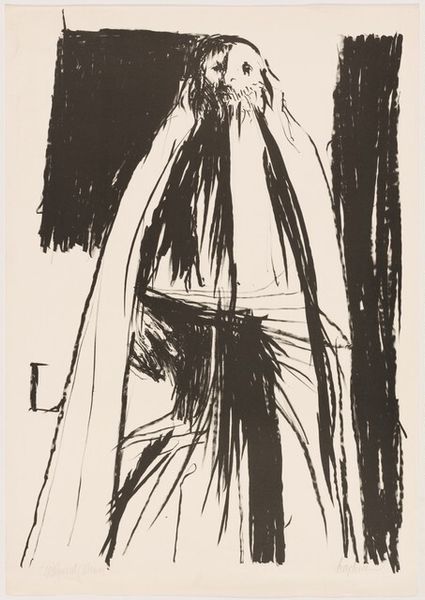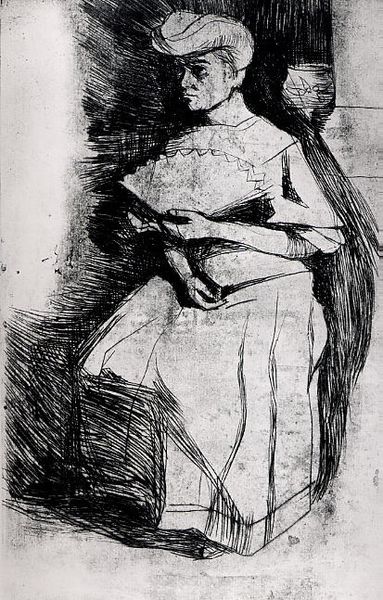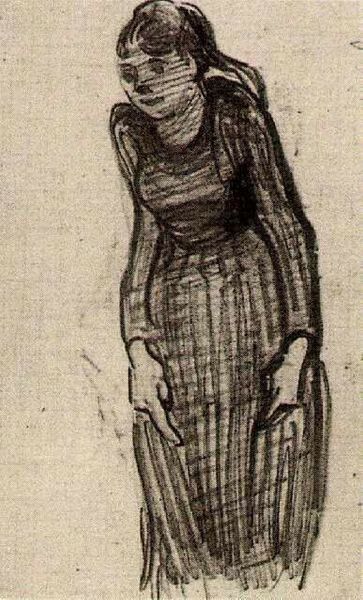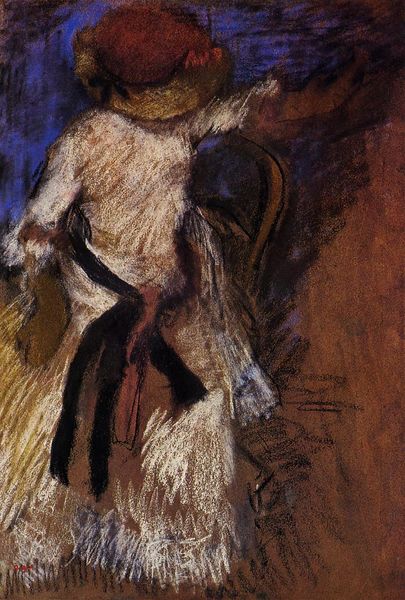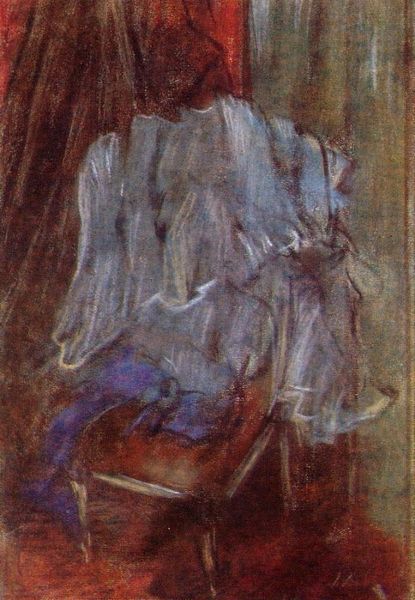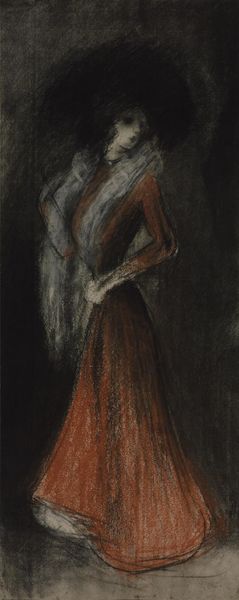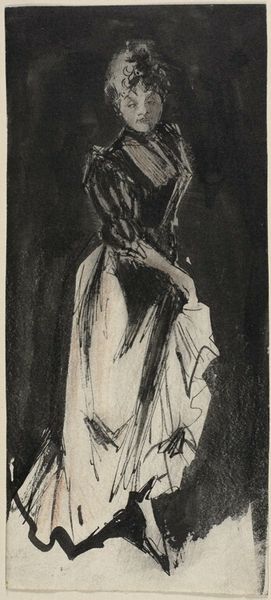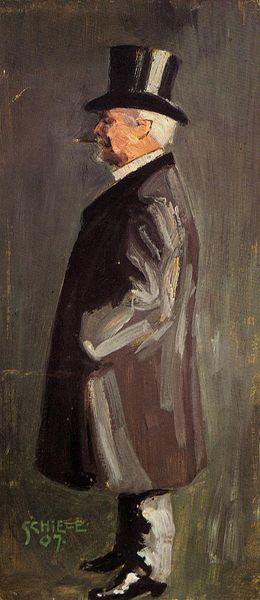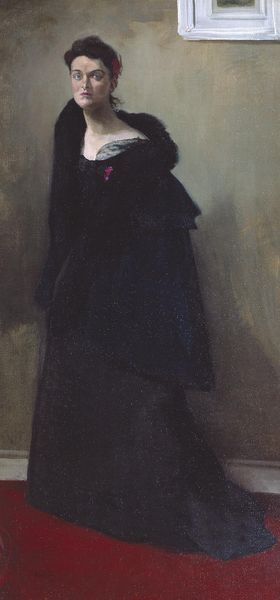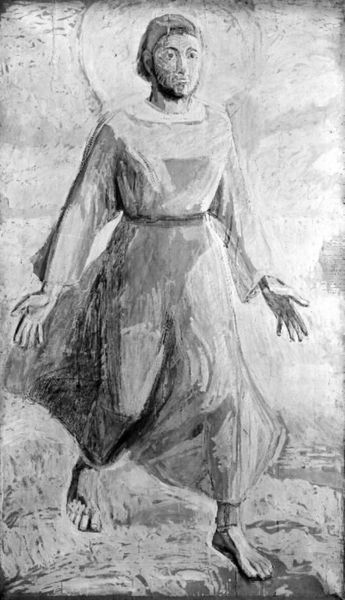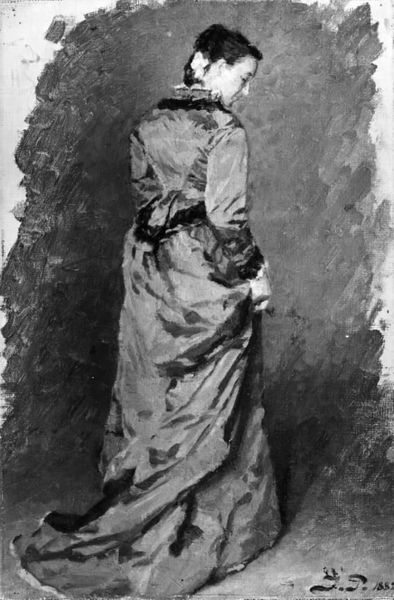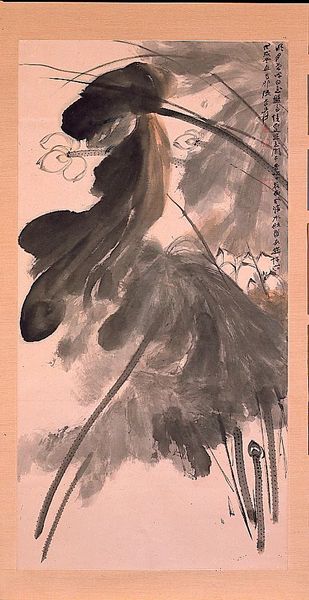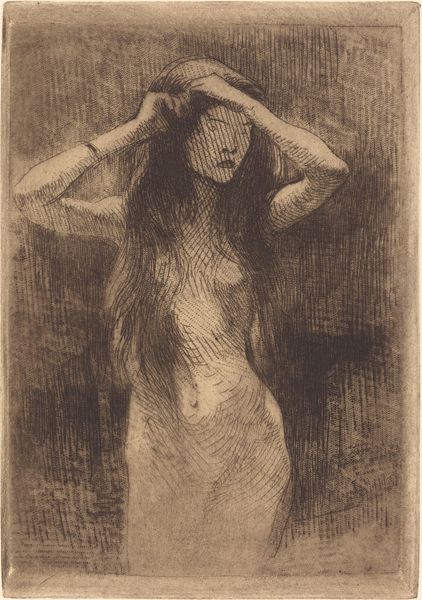
drawing, dry-media, pencil
#
portrait
#
drawing
#
dry-media
#
pencil
#
female-portraits
#
modernism
Copyright: Public domain US
Curator: Here we have Picasso's "Manola" from 1905, a pencil drawing. The depiction presents an interesting visual, reflecting the aesthetic and social concerns of his era. Editor: My first impression? There's a somber, almost haunting quality about it. The swirling lines and shadowy use of the pencil create an atmospheric tension, quite remarkable just from dry media. Curator: Precisely. Notice how Picasso’s involvement with the theater milieu, especially in Barcelona, informed these portrait drawings? "Manola," likely portraying a popular entertainer, speaks to the culture of spectacle that thrived, both celebrating and exploiting performers' images. Editor: And look at the textures—the feathery shawl, the wisps of hair escaping that elaborate hat, the layers seem constructed as an aesthetic of dress, but beyond what she might be wearing, her clothing suggests the way these workers are presented to a consuming public. It's clearly a constructed identity. How was that theatrical world affecting labor standards or compensation? Curator: Good question! And such scrutiny forces us to reconsider her portrayal in relationship to her personhood. Picasso seems captivated, even complicit in the visual construction of female performers during that time; though he romanticizes such a character, the portrayal carries societal weight, considering prevailing artistic expectations. Editor: But there's also the pure craft here, you know? All of that rendering achieved simply with graphite, the building up of tone through cross-hatching, it’s remarkable considering he uses the surface and medium without excess or complication, suggesting its use in commercial design. Curator: Agreed. Furthermore, "Manola" gains further historical significance, representing the social fabric, from theaters to brothels, Picasso frequented in Barcelona, the bohemian culture that defined him artistically. Editor: What truly stands out for me is the visual labor here, how she must endure so that this particular representation continues. I find myself wanting to know how Picasso valued the work embodied in her performance, the making and remaking involved with an artist using pencil to conjure the woman’s whole existence as both model and working girl. Curator: Certainly. Appreciating this pencil work transcends the surface beauty; It speaks of power, perception, performance, Picasso, but of the era that allowed that all to happen and be represented this way. Editor: Yes, it has urged me to think beyond line and form to engage a person, a life, perhaps unfairly idealized by the artist's hand and its role in popular entertainment.
Comments
No comments
Be the first to comment and join the conversation on the ultimate creative platform.
